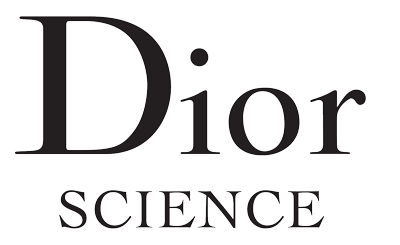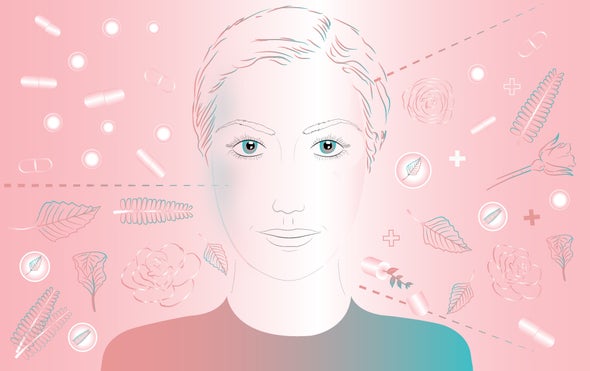In integrative medicine, healthcare practitioners often combine conventional treatments with holistic ones, such nutritional supplements, acupuncture and phytotherapy, which is the use of plant-derived medicines. The principle is that synergistic combinations can deliver better results than any single therapy alone.
“In my field, that of human nutrition, one compound might reduce absorption of cholesterol in the intestine, for instance, and another the de novo synthesis of cholesterol in the liver,” says Jan Frank of the Institute of Biological Chemistry and Nutrition at the University of Hohenheim in Stuttgart, Germany. Frank is working to understand the properties of potentially health-beneficial bioactives. “If both these compounds are allowed to act together, they can produce a greater cholesterol-lowering effect than either compound alone,” he says.
Dior Science, the science division of Dior in France, is applying integrative thinking to its skin care.
Plants contain a number of chemical compounds, some of which have nutritive, anti-inflammatory and antioxidant properties. Dior has been mapping the impacts of these bioactive combinations and has found, in a number of cases, that they allow different compounds to simultaneously act on different molecular targets in the body.
Synergistic Concept Applied to the World of Cosmetics
“Integrative Medicine, in its most limited form, is when patients use plant compounds, such as curcumin and resveratrol, to name two examples, in high doses in addition to their standard treatment,” Frank says. “Cancer patients, for instance, hope to be able to better control a tumor thanks to the anticancer properties of these phytochemicals acting on top of anti-tumor drugs.”
Curcumin (from the rhizome of Curcuma longa) has also been shown in many cell culture and animal studies to exhibit anti-inflammatory activity. In arthritic rats, for example, it has been shown to reduce C-reactive proteins, a biomarker for inflammation. When combined with boswellic acids from the Boswellia plant, studies indicate that curcumin’s anti-inflammatory action is further enhanced.
“This synergistic concept can also be applied to the world of cosmetics,” Frank says. “In much the same way, different bioactives in cosmetics can target different aspects, of say, skin aging. One substance might protect the skin from the deleterious effect of UV radiation, another compound may enhance skin regeneration and another may act on skin elasticity. If you combine these different compounds in a single product, you can achieve higher efficacy.”
The “Rose de Granville”
In their latest study, researchers at Dior Science, in Saint-Jean-de-Braye near Orléans in France, investigated the different micro- and macronutrients and bioactive molecules in a particular hybrid of rose, the “Rose de Granville” (RDG). The varietal was developed at the request of the cosmetics group Parfums Christian Dior and required more than ten years of stringent breeding. It was grown on an organic farm in the Loire Valley, not far from the research laboratories, in nutrient-rich soil.
The scientists, led by Laure Pasquier and Jocelyne Franchi, have studied how the Rose de Granville’s bioactive compounds might be beneficial for the skin—particularly the skin around the eye, which is very different from that on the face in that it is much more fragile. They analyzed extracts from different parts of the plant (the flower and rosehip) using analysis techniques for their anti-inflammatory action and nutritive properties.
Each of the extracts was obtained using different techniques (“double-extraction” or “thermo-extraction”), adapted to the bioactive molecules they contain and to the components that the researchers wished to extract from them. Extracts from different parts of the plant play a distinct biological role and thus contain very different chemical molecules that nonetheless appear to supplement each other perfectly.
The Dior researchers had already shown that an extract from the RDH rosehip stimulates the production of ATP in cultured keratinocytes by 21% since it appears to impact on more than 60 biological targets in skin cells. “The main micronutrients in this part of the plant are potassium and calcium,” explains Franchi. “Calcium is important for the epidermis as it helps reinforce its barrier function. Indeed, we found that rosehip extract stimulates the genetic expression of biomarkers involved in epidermis cohesion and differentiation.
“The extract also stimulates genetic expression of the proteins collagen I, III, V and elastin in the extracellular matrix,” she adds. “It also stimulates the enzymes involved in the formation of the protein fibers LOX (Lysyl oxidase) and PECOL (Procollagen C-endopeptidase enhancer). It inhibits the activity of enzymes that degrade collagen and elastin (MMP3) too.”
And that is not all: extracts from the rose flower itself contain many essential fatty acids such as ω3 and ω6 as well as micronutrients like α-tocopherol (Vitamin E) and β-sitosterol (which is a phytosterol). The cryo-extract of rose, for its part, contains as many as 20 micronutrients, including Vitamin B3, zinc (an oligo-element) and magnesium.
“Combining extracts from the flower and the rosehip, which have very different but complementary bioactivity, can thus be used to make a treatment that is far more efficient than using any of the extracts on its own,” says Franchi. “Indeed, in our ex-vivo and in-vitro studies on skin explants and cell cultures, we found that the zone around the eye can be reinforced thanks to the action of micronutrients in two of the extracts and anti-inflammatories in another.” A winning combination.
Learn more about the use of plants in medicine and skincare.


